The FSP Hydro G 750W Power Supply Review
by E. Fylladitakis on March 3, 2016 8:00 AM EST- Posted in
- PSUs
- Cases/Cooling/PSUs
- 750W
- FSP
- Modular
External Appearance
The Hydro G PSUs use a slightly modified standard steel chassis that is sprayed with satin black paint. The satin paint has an excellent finish but it also is highly prone to fingerprints, so much so that in systems where aesthetics matter and the PSU is visible, the unit will probably need to be cleaned using a soft cloth after first installing it inside the case. A sticker with the electrical specifications and certifications of the PSU can be found at the top side of the chassis. On both of the PSU's sides, we find the simplistic blue stickers pre-attached. Thankfully, the side sticker facing the left side panel of the case will always be upright, regardless whether the PSU has been installed with the fan facing up or down.
FSP is using a diagonal dual parallel wire finger guard for the fan. Diagonal Cassini oval openings also form the exhaust opening at the rear of the PSU. According to the company, this formation is supposed to reduce aerodynamic drag, which in turn reduces turbulence, resulting to lower noise.
The front of the PSU is similarly simple, with an abstract design based on more diagonal Cassini ovals to the upper right corner of the surface.
Internal Design
The airflow needs of the Hydro G PSU are covered by a 135 mm fan from Power Logic. It is a very high quality model using a Hydro Dynamic bearing, is capble of reaching 2000 RPM. At that speed the maximum airflow would be around 111.1 CFM.
Obviously, the Hydro G PSUs were designed and built by FSP themselves, without any other OEM behind it. It is a new but simple design, using a resonant LLC converter formation, with a half-bridge primary inversion stage and a 12V-only conversion at the secondary of the transformer, with DC to DC conversion circuits for the generation of the minor voltage lines. The input filtering stage consists of four Y capacitors, two X capacitors, two filtering inductors and one surge-suppressing MOV.
Meanwhile the cooling design is a little strange for a higher capacity 80Plus Gold PSU. A sizable heatsink covers the APFC and primary inversion side active components, but relatively tiny heatsinks are utilized for the secondary side conversion transistors. The reason for this is that the conversion components that FSP is using at the secondary, found at the underside of the main PCB, have very low conversion losses. Furthermore the overall thermal design of the Hydro G has the chassis itself doubling as a heatsink. Do not be alarmed if the body of the PSU itself gets quite warm during operation, it only means that the cooling system works the way it is supposed to. This way FSP can deliver a quieter PSU with lower internal thermal needs, shifting a small part of the thermal load directly to the exterior of the unit through its chassis. The catch is that this approach is going to slightly increase the thermal load of the system itself, although the increase should be minimal considering the volume and airflow of the average ATX case.
FSP advertises this unit as having "100% Japan made e-caps". By "e-caps", the company obviously means electrolytic capacitors. Sure enough, the two main 420V/330μF APFC capacitors are supplied by Nippon Chemi-Con. The same manufacturer supplies most of the electrolytic capacitors found inside this unit, with the exception of a few Rubycon products. All of the polymer capacitors are supplied by Teapo, which is a reputable Taiwanese manufacturer.


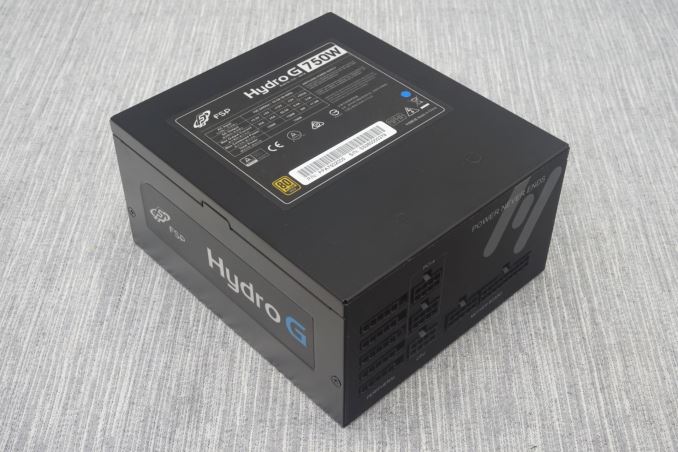
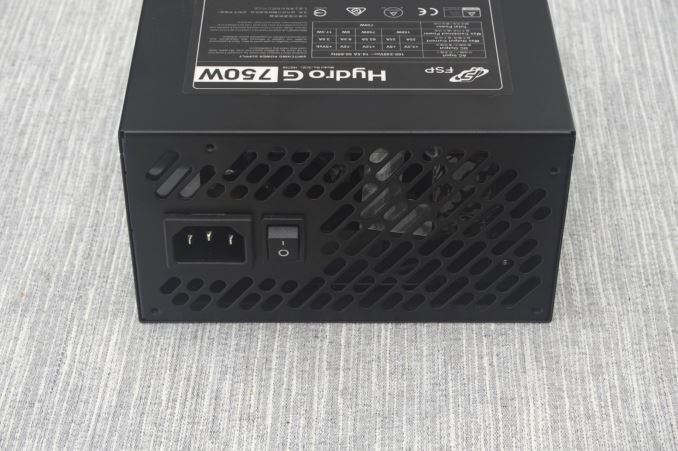
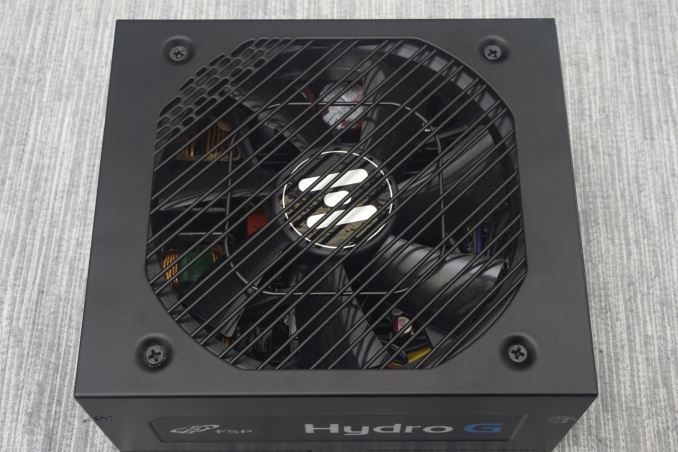
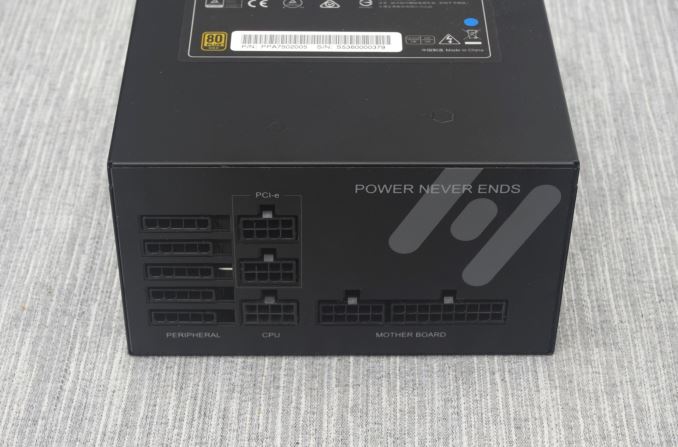
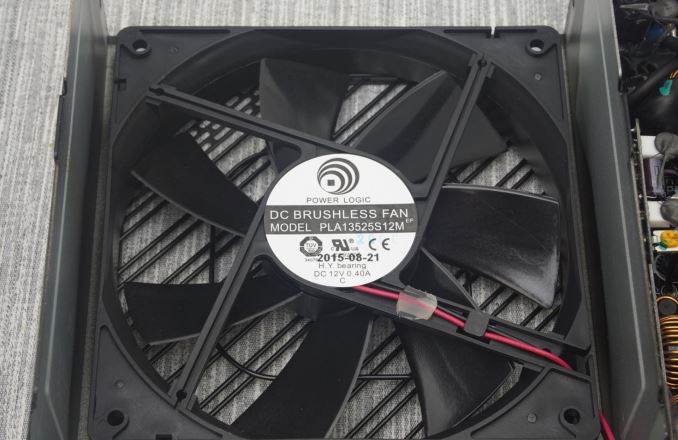
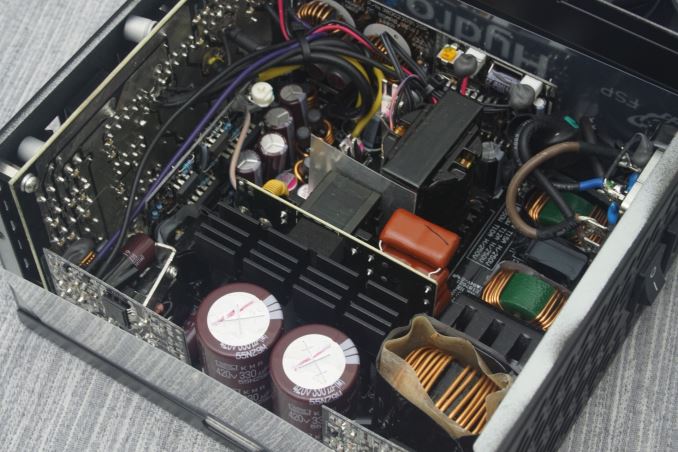
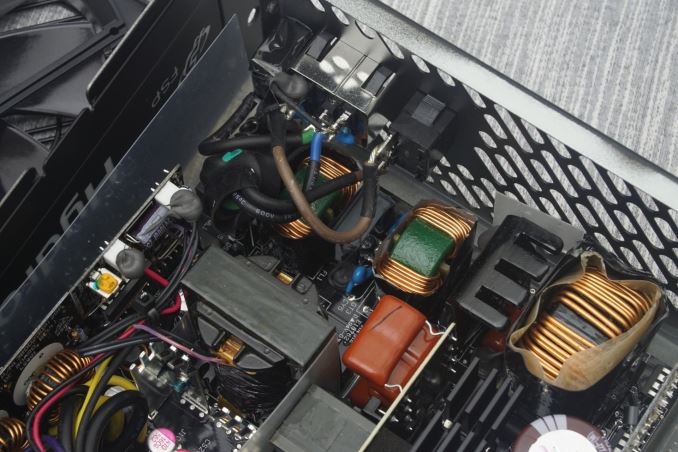
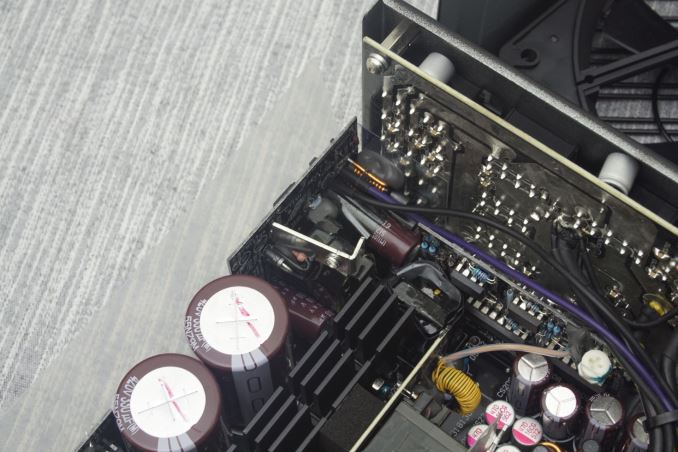
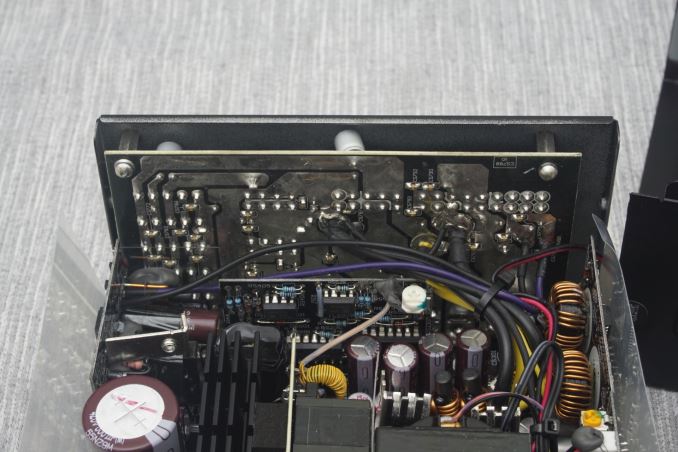
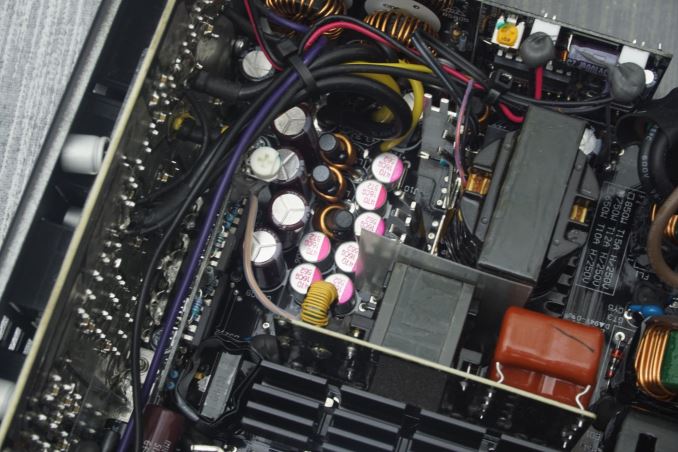








22 Comments
View All Comments
MrSpadge - Thursday, March 3, 2016 - link
Because the PSU likes water spilled on it, I guess.Shadowmaster625 - Thursday, March 3, 2016 - link
Why have "Hydro" in the name if it doesnt have any liquid coolant in it?Murloc - Thursday, March 3, 2016 - link
because it sounds cool (pun intended)LiviuTM - Thursday, March 3, 2016 - link
more likely from the "Hydro Dynamic bearing", I guess.geniekid - Friday, March 4, 2016 - link
They should get into aftermarket cooling. "FSP Hydro Extreme - the ultimate air cooling solution."DanNeely - Thursday, March 3, 2016 - link
"The number of connectors per cable is a bit unusual though. For example, one cable has four SATA connectors, another has two SATA and two Molex connectors, and two of them have two SATA, one Molex and one floppy connector each. There is no cable with just Molex connectors on it. "It might be unconventional, but in principle I kinda like it; much better than every cable being identical. I was wiring up a new box a few days ago, and ended up using a cable with 4 or 5 sata connectors to power a single SSD and via a sata to molex adapter the case's built in fan controller; while having to stuff the rest out of sight in the very cramped space behind the mobo. I'd probably only have put molexes on 2 of the cables though because they're getting somewhat rare. Wiring a floppy connector in at all is rather surprising; virtually nothing has used them for years.
Also, that description adds up to 10 sata connections 4+2+2+2, not 12 as in the summary table.
nagi603 - Monday, March 7, 2016 - link
Other manufacturers have somewhat better mixes for their modular ones. My Seasonic X400 has shorter cables with only 2 sata connectors on it, and also one with 2 molex connectors. Either would have worked for you. The mixed ones of FPS are bad because in a high-power build, you plan to use a lot of sata connectors tipically, or a lot of molexes. Not both.rhysiam - Thursday, March 3, 2016 - link
Thanks for the review!Just a suggestion, could you chart the claimed 80 Plus standard on the "Energy Conversion Efficiency" charts? I know we can look it up and compare that way, but it would be much easier to have a unit's performance and 80 Plus (Gold in this case) standard on the chart for comparison. Thanks.
mauler1973 - Saturday, March 5, 2016 - link
When I click on the newegg link for the product it goes to toms hardware site address before going to newegg. What's the deal?Oxford Guy - Friday, March 11, 2016 - link
"Their designs are usually found in advanced mid-range units, such as the Be Quiet! Dark Power Pro 10 series"The Dark Power Pro 10 series had high-end units made by Seasonic in it, not just FSP models. They came with advanced features like a Lunpen filter and a premium fluid bearing fan. The series topped out at 1200 watts.